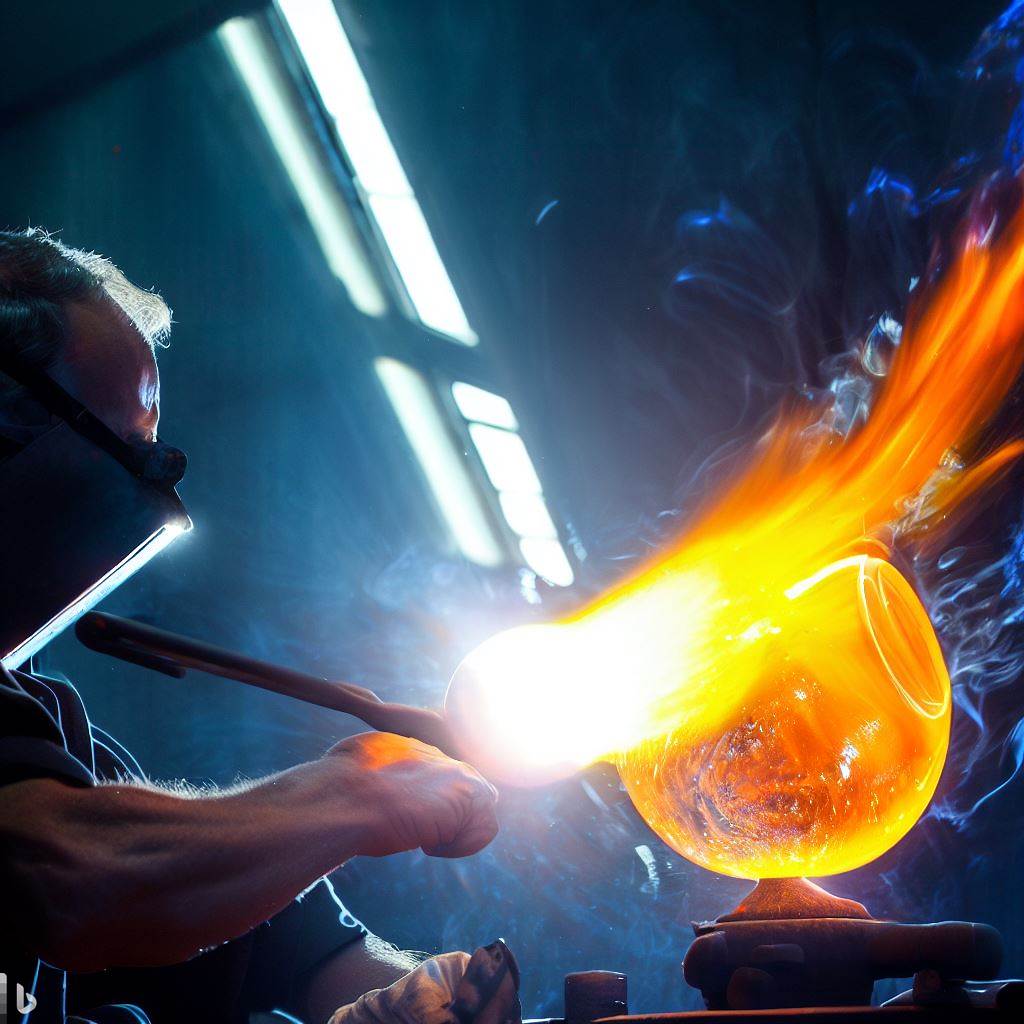Pushing Boundaries: Innovations in Contemporary Glassblowing
While ancient in origins, glassblowing continues evolving as contemporary artists combine old world mastery with high-tech possibility. By leveraging emerging technologies, unconventional pairings, and experimental new techniques, today’s glassblowers are catapulting this traditional craft into groundbreaking new territory.
Augmenting Nature’s Beauty Through Glass
Seeking to enhance beauty in the world, botanical sculptors recreate natural forms using blown and molded clear glass. Vanessa Lamort creates magnified glass flowers and fruits replicating details with unbelievable realism. Using CT scans, Brian Giniewski precisely renders the skeletal intricacies of marine organisms. These fragile glass installations highlight nature’s hidden grandeur.
Sculpting Medical Mysteries in Glass
On the frontier between art and medical science, anatomical glass sculptors illuminate the human body’s astonishing inner workings. By consulting radiographic scans, surgeons, and biology texts, artists like Alan Jaras blow highly accurate glass renditions of organs and biological systems for educational institutions. These uncanny glass models provide enlightening and sometimes unsettling perspectives into our inner spaces.
Augmented Reality Integrated Sculptures
Augmented reality adds a virtual dimension to glass art by overlaying digital content onto physical works. Some pieces incorporate QR codes on glass which link to related media when scanned. Imaginative installations project animations onto glass elements, creating magical hybrid artworks mixing real and virtual. As AR technology develops further, the possibilities for multimedia narrative engagement through glass sculpture grow exponentially.
Kinetic Glass
Motion energizes glass by incorporating kinetics into blown forms. Pump systems animate liquid-filled glass vessels. Magnetic levitation creates floating liquid glass blobs. Some sculptures feature arms or tentacles moved by motors and air bellows to swirl and sway. Programmable LED lighting synchronizes with motorized elements, producing dazzling theaters of light and motion. Adding movement introduces time-based variables, giving kinetic art perpetual variability.
Fracture Techniques
Fracturing, slumping, and collapsing glass intentionally produces provocative distorted effects. Rapid thermal shocking shatters sheet glass which gets fused into jagged textures. Gravity slumping bends and sags glass into chaotic configurations before re-hardening the distortions. Controlled interior air pocket explosions generate cracked patterns within pristine exteriors. Manipulating glass failures creates entropic beauty from controlled destruction.
Cast and Kiln Formed Glass
Casting and kiln forming adapt industrial techniques on a studio scale, extending glass capabilities. Powdered glass gets packed into molds, then fired in kilns to fuse into shapes. Large-scale cast glass fabrication is also possible rotating molds during prolonged high-temperature firings. Kiln formed glass allows certain artists to create desired forms in glass without needing blowing skills.
Mixed Media Incorporation
Glass need not be worked alone. Mixed media collaborations produce inventive combinations with wood, metal, ceramics, paper, and found objects. Some glass artists collage photos and materials directly between flat glass sheets then fuse together. Others use blown glass as lenses to refract light through collections of curated objects assembled within wood boxes. Exploring glass connections with other mediums breaks barriers between art forms.
The Future’s Bright for Illuminated Glass
Glass continues mesmerizing cultures worldwide even after five millennia. While reinterpreting ancient alchemical mystique, pioneering artists also hack fresh possibilities into this age-old material using futuristic tools. The next innovations surely incubate in today’s experimental studios, promising even more creative frontiers for glassblowing’s molten magic to illuminate.
